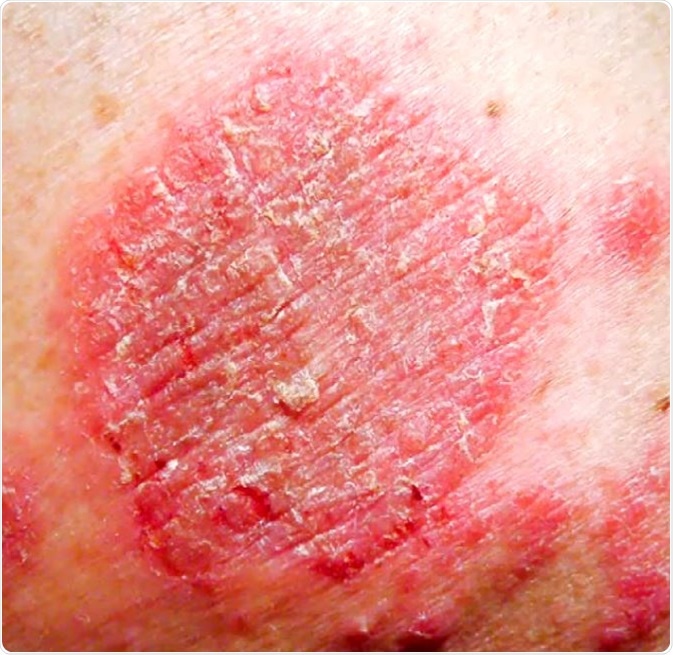Launching 1st March 2023. Also check out: https://www.thailandmedical.news/
Nummular dermatitis is a form of eczema, also referred to as nummular eczema or discoid eczema, which occurs most often in older men between the ages of 55 – 65.
People with this condition develop coin-shaped lesions on their skin, which commonly present as red, swollen, dry and scaly. They can also be very itchy and may crust over and ooze fluid.
Areas of the body most frequently affected by nummular dermatitis are the torso, arms and legs.

The cause of nummular dermatitis is not yet understood. There are, however, several factors that can make a person more likely to develop this disorder.
The most common risk factor for nummular dermatitis is having extremely dry skin. Skin that is very dry is unable to act as a good barrier against substances that come into contact with it. Because of this, very dry skin can become aggravated and inflamed by materials that are not usually harmful, like standard soaps or cosmetics. This means that people diagnosed with this condition must avoid any known irritants and be very careful when selecting what toiletries to use, as even brands labelled as ‘sensitive’ could result in further damage to the skin.
Other risk factors for nummular dermatitis include:
Although this condition is not contagious and therefore cannot be passed from person to person by direct contact of the skin, its symptoms can be very uncomfortable and distressing.
Fortunately, there are some treatment options available for people with nummular dermatitis, with the majority of patients successfully clearing their lesions without many, if any, recurrences.
Emollients
Emollients are medical products used to help manage dry or scaly skin in patients with all different types of eczema. When applied to the skin’s surface they create an effective barrier to minimize loss of water and prevent further dryness. They come in three different forms; creams, lotions and ointments. Most patients find trial and error to be the best method of determining which emollient is best suited to them.
Corticosteroids
Topical corticosteroids, which contain the medication cortisone, can also be prescribed to aid the symptoms of different skin conditions like nummular dermatitis. These medications are available in the form of cream, which is applied onto the affected areas of the skin, or as tablets which are swallowed. Both types have proven to be an effective way to reduce inflammation and redness of irritated skin.
Antihistamines
Antihistamines are typically used to provide relief from the symptoms of allergies. Patients with nummular dermatitis may take antihistamines to minimize severe itchiness of the skin and to help with sleep. Antihistamines prevent patients from scratching their lesions, which could result in further skin damage and potential infection.
Methods of self-help
There are also several steps that can be taken at home to help manage the symptoms of nummular dermatitis. For instance, harsh soaps and chemicals must be avoided even if they do not seem to irritate the skin – an emolliate soap should be used instead. Daily lukewarm baths and showers are also helpful to calm the skin and reduce inflammation, as is using an air humidifier and wrapping open skin wounds with medicated bandages.
Anyone who thinks they may have nummular dermatitis should consult a healthcare professional for an accurate diagnosis. The diagnosis will typically involve an examination of the skin and a discussion about any known allergies or irritants.
In some cases, a small biopsy or swab may be required in order to rule out any alternative causes of the skin complaint. This is because nummular dermatitis is often mistaken for other skin conditions or types of eczema, due to its wide range of symptoms. For example, it bears many similarities to the fungal infection ringworm, which presents as a circular-shaped rash on the skin that is red, itchy and scaly.
If left untreated, lesions caused by nummular dermatitis can become infected. Patches of this condition that are infected are harder to treat, more likely to recur and may leave a lasting scar on the skin. A healthcare professional can determine whether an infection is present by conducting a swab for bacteria. Some signs of infection include increasing amounts of oozing, yellow crusting or fluid, lots of pain, heat and inflammation, and feeling generally unwell with nausea, chills and fever.